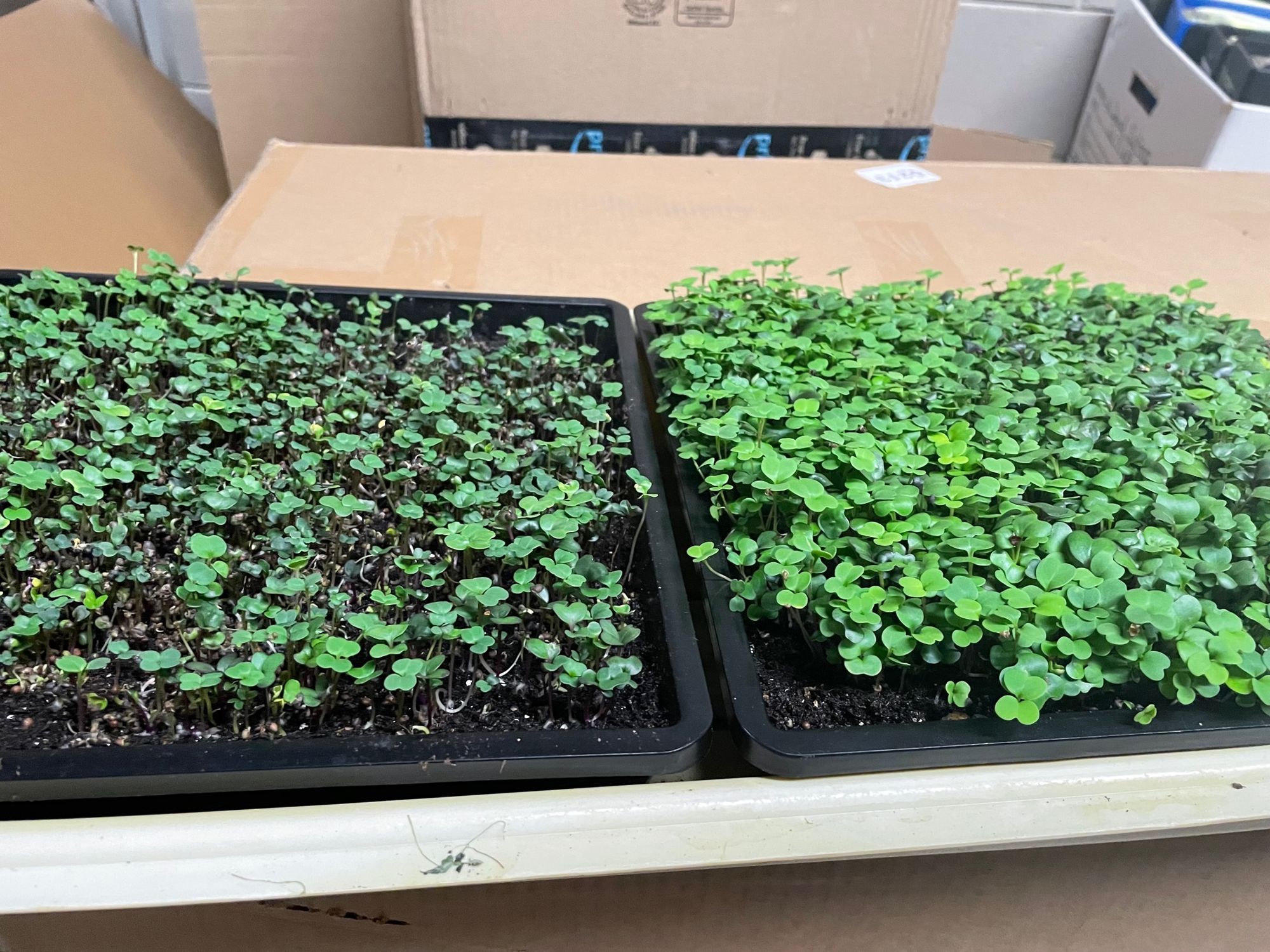Microgreen Experimentation Goes Well

Welcome to the "Earthy" Side of TDE
TDE's current tagline, "Earthy Catholic Commentary," has two meanings.
(1) Ribaldry: subject matter and terminology that one priest friend once referred to as "earthy." The context: "He's a big jovial guy whose language is, well, let's just say it's 'earthy.'"
(2) Gardening.
This post falls in category (2). The first of 2022. Although gardening is not a regular topic here, it rears its head occasionally.
Summary: You can reuse microgreen growing medium AND it makes the microgreen trays more productive.
A few dogmas from the Church of Microgreens: They're fast and fun to grow (true), they yield nutrients about ten times greater than their fully-grown counterparts (no idea if it's true), and they're expensive (true).
Two other MG dogmas: (1) Micrgrogreens require no nutrients. You use a sterile planting medium (coir or peat moss) with no fertilizer. The plants have enough nutrients in their seed to propel them through day 10 (harvest day). (2) You throw away the planting medium after every cutting (or maybe toss it into your compost for use in the spring garden).
Those last two dogmas appear to be false or overblown.
I started recycling my spent microgreen medium. After the roots and debris fully decompose, I stir the medium and reload the trays. You can see the results above. The greens on the left are planted in a sterile planting medium. The right tray is the exact same planting medium but recycled (with the debris from previous trays decomposed . . . roots break down in a month). Identical seeds, planted at the same time, same watering pattern.
I think the difference is obvious, and I'm pretty stoked. This is the third tray that I planted this way. Every tray has been the same.
But I Cheat a Bit
Now, I don't just put the spent medium in a bucket and wait for it to break down. That would take a while and, though the roots break down in a month, the debris on top takes longer. I wanted to recycle it every three weeks or so.
Enter the Worm Factory.
I bought a brand new one and dedicated it solely to spent microgreen soil (in order to reduce the risk of bacteria or disease infecting the soil). I filled my first worm bin with spent soil, added a hundred worms from my other bins, added a little bit of cornmeal for extra food, and waited.
Three weeks later, I had the richest soil I've ever handled. It's straight peat moss and/or coir (the two are inextricably mixed in my old potting mix bins) laced with a small amount of vermicompost, which is the "platinum" of soil amendments.
The results are in the picture.

Now, we'll see if the success continues. Microgreens are highly susceptible to disease and worm bins carry a ton of bacteria (they're pretty gross, actually). So far, the MG bins have been surprisingly clean after I dump the decomposed planting medium. I can wash one with hot soap and water in about ninety seconds and it looks like new. I then spray it lightly with a bleach cleaner, wipe it down, and let it sit until the next tray of spent microgreens is ready to be deposited.
We'll see how the experiment continues, but at this point, the sterile planting medium is gone. I'm using repurposed microgreen soil only.



